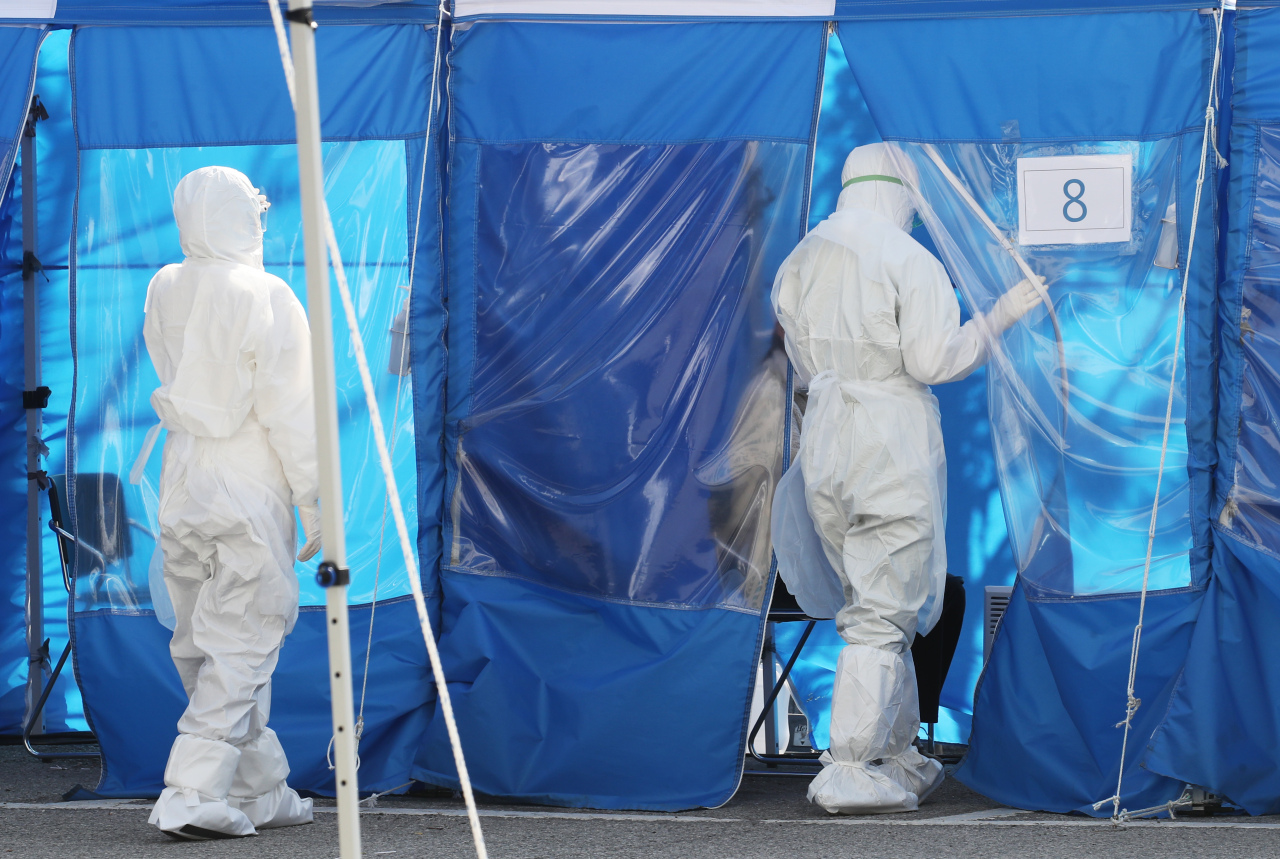Korea reports lowest daily increase in coronavirus cases since Feb. 20
Free virus testing for incoming travelers from Europe is to protect Korean citizens, KCDC director says
By Ock Hyun-juPublished : March 23, 2020 - 16:09

South Korea reported the lowest daily increase in coronavirus cases in a month on Monday as the government ramped up measures to contain the number of infections arriving from abroad.
Total cases in the country reached 8,961, up 64 from the previous day. Of the new cases, 14, or 21.9 percent, involved travelers arriving from abroad, according to the Korea Centers for Disease Control and Prevention. It was the lowest daily increase since 35 new cases were found on Feb. 20.
As the government on Sunday began to test all incoming travelers from Europe -- citizens and foreign nationals alike -- for COVID-19 upon arrival, 13 cases have been identified during quarantine screening at the airport, according to KCDC Director Jung Eun-kyeong.
Out of 1,442 people who arrived in Korea from Europe on Sunday, 152 showed symptoms and had been brought to a state-run quarantine facility for testing as of 7 p.m. Sunday. Those without symptoms, or 1,290 people, were taken to separate temporary facilities for testing.
Of those who arrived from Europe, 87.7 percent were Korean citizens.
Regardless of test results, those who entered the country from Europe for a long-term stay must self-isolate for 14 days either at their homes or designated state facilities. Those who are here for a short-term stay and test negative will be under the government’s active monitoring.
Currently, testing and medical treatment expenses are covered by the state budget for both citizens and foreign nationals.
Amid growing controversy over the government’s decision to pay for virus testing for incoming travelers, KCDC Director Jung said such measures were being undertaken to prevent transmission of the virus within the country and to protect Korean citizens.
In the wake of calls for the toughened quarantine screening procedures to be put in place for arrivals from North, Central and South America, in addition to those arriving from Europe, the situation there is not as dangerous as it is in Europe and the authorities are closely monitoring relevant indicators, Jung said.
To save time and free up space more rapidly, the government said it will install 40 “walk-through” testing booths at Incheon Airport where inbound travelers can be tested for the virus right away. They will then move to facilities where they can await their test results.
Jung reiterated the importance of “social distancing,” asking citizens to refrain from nonessential travel and stay home as much as possible unless they have to go out to buy necessities, visit hospitals or commute to work.
The government, at this point, is not considering imposing a total lockdown, she said, adding that the spread of the virus can be slowed and community transmission can be contained as long as citizens maintain strict social distancing for the next two weeks.
The new cases marked the lowest daily increase in a month in the country, continuing a downward trend in new infections from the peak of 909 cases reported Feb. 29.
Of the new cases, 24 were reported in Daegu, the city at the center of the coronavirus outbreak, 14 in Gyeonggi Province, six in Seoul and two in North Gyeongsang Province. The cases in Daegu represent 71.5 percent of the country’s total.
In Seoul, four more cases were reported from a call center in southwestern Seoul, bringing the total number of call center-related infections to 156. Most of them of them, or 94, worked on the same floor.
In Gyeonggi Province, four more cases were confirmed from a church in Seongnam, with a total of 70 cases traced to the church.
Of the total cases, 81.1 percent were linked to clusters of infections. Some 56.4 percent were traced to the Shincheonji Church of Jesus.
The death toll rose by seven to 111, with the overall fatality rate standing at 1.24 percent, according to the Korea Centers for Disease Control and Prevention. The death rate is 6.34 percent for those in their 70s and 11.62 percent for those in their 80s.
Some 3,166 people were discharged from quarantine, up 257 from the previous day. A total of 338,036 people were tested for the virus, with 315,447 having tested negative. Some 13,628 people are awaiting test results.
Meanwhile, it is time for the government to decide whether to continue with its current policy of seeking to mitigate the impact of the virus by maintaining its strong quarantine and social distancing guidelines, or get its citizens’ lives back to normal -- by reopening schools, for example, Oh Myoung-don, head of the country’s central clinical committee for emerging disease control, said Monday.
The spread of the virus can be stemmed when 60 percent of the population develops immunity after getting infected with the virus, he said, suggesting that the government prepare for a long fight. A vaccine would take at least a year, he added.
By Ock Hyun-ju (laeticia.ock@heraldcorp.com)
-
Articles by Ock Hyun-ju




















![[Today’s K-pop] BTS pop-up event to come to Seoul](http://res.heraldm.com/phpwas/restmb_idxmake.php?idx=642&simg=/content/image/2024/04/17/20240417050734_0.jpg&u=)